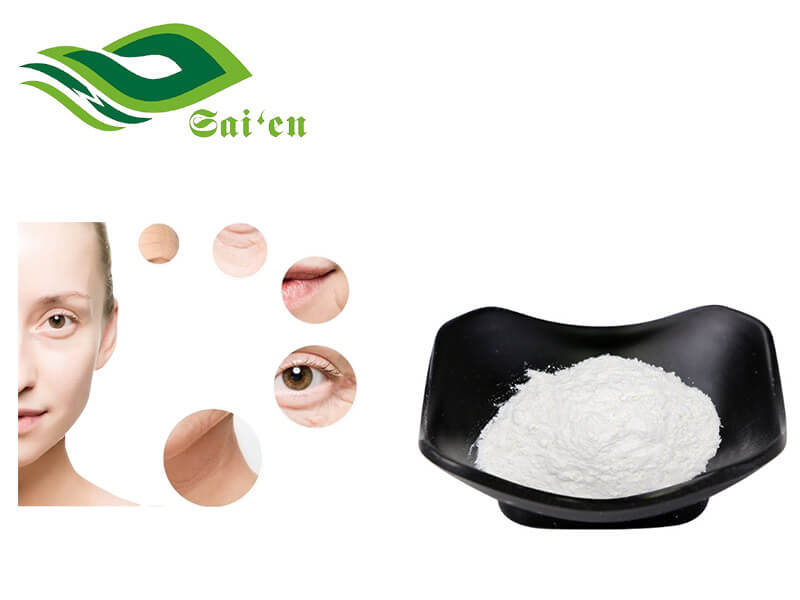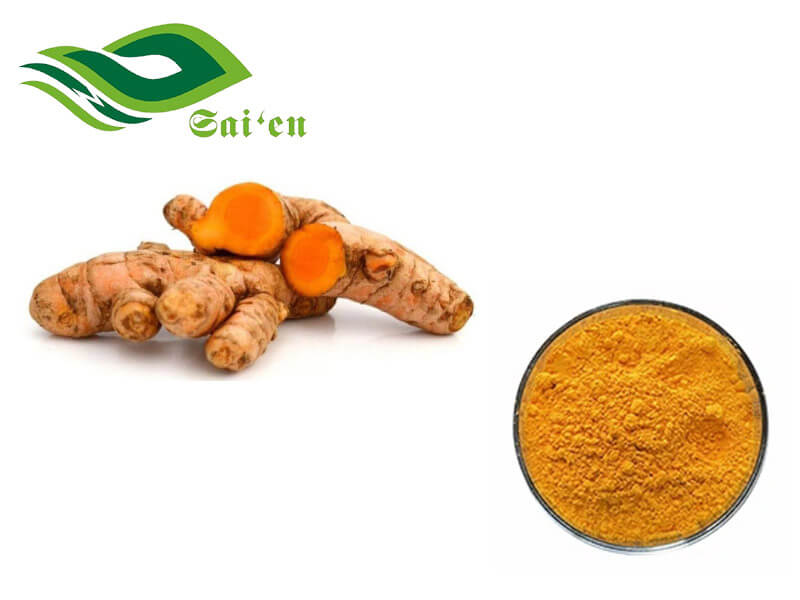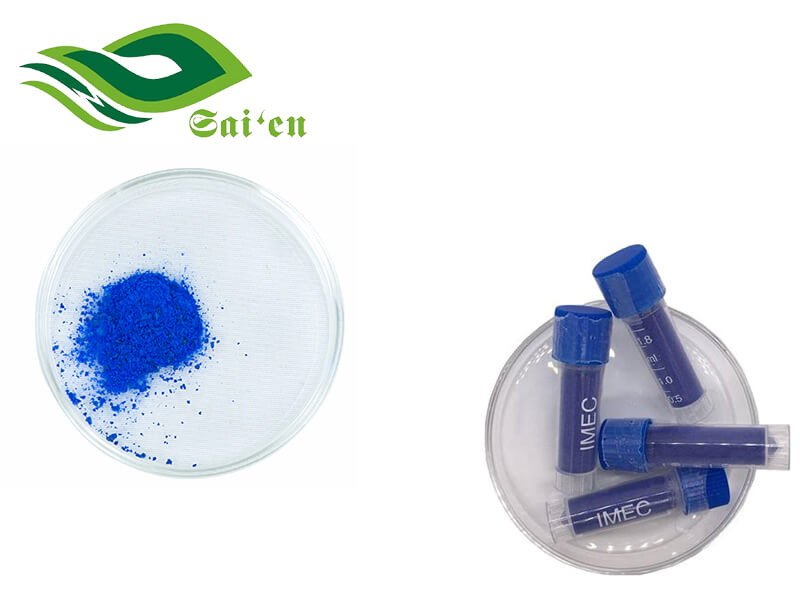Are you ready to achieve smoother, firmer skin but wondering how often to use Copper Peptide-1 for the best results? Copper Peptide-1, or GHK-Cu, has become a key ingredient in the skincare industry, praised for its ability to stimulate collagen production, reduce fine lines, and enhance skin texture. But for businesses formulating products with Copper Peptide-1, understanding the ideal frequency of use is crucial to maximizing the peptide’s benefits for consumers.
In this guide, we’ll explore the optimal application schedule for Copper Peptide-1 in product formulations, helping your brand offer the best results to your customers. Whether you’re targeting wrinkles, uneven skin tone, or loss of elasticity, the frequency of application plays a significant role in the effectiveness of your products.
Can You Use Copper Peptide-1 Every Day for Maximum Benefits?
Yes, you can use copper peptide -1 every day, but it depends on your skin type and how your skin reacts to it. Copper peptide-1 is known for its ability to boost collagen production, reduce fine lines, and improve skin texture. However, like any active ingredient, it’s important to introduce it into your routine correctly to get the best results. For brands offering products with Copper Peptide-1, it’s essential to introduce this ingredient correctly in a way that provides visible, long-term results.
How Often Should I Use Peptides?
Peptides are a game-changing ingredient in skincare, known for their ability to boost collagen, improve skin elasticity, and reduce the appearance of fine lines and wrinkles. But to truly see their benefits, it’s important to know how often you should use them. Here’s a breakdown based on different skin types and goals.
1. For Most Skin Types:
Products containing Copper Peptide-1 can be formulated for daily use, especially for consumers with normal or balanced skin. However, starting with a frequency of 2-3 times a week helps customers gradually build tolerance. This frequency allows your skin to gradually get used to the active ingredient without overwhelming it. Over time, daily use can help improve skin texture, boost hydration, and support collagen production, leading to youthful, glowing skin.
2. For Sensitive Skin:
If your brand is targeting sensitive skin, it’s recommended to formulate products with lower concentrations of Copper Peptide-1 or suggest less frequent use at first. This minimizes the risk of irritation, and as customers build tolerance, the frequency can be gradually increased. Begin by using peptides once or twice a week to assess how your skin reacts. Peptides are generally well-tolerated, but sensitive skin can sometimes be prone to irritation with new products. Once skin builds tolerance, you can gradually increase the frequency to 3-4 times a week. This slow approach ensures that you get the benefits of peptides without the risk of irritation.
3. For Mature or Aging Skin:
For those focused on anti-aging benefits, daily use of Copper Peptide-1 products is typically recommended. This ensures consistent collagen stimulation and helps improve skin elasticity, leading to visible reductions in fine lines and wrinkles over time. If you're using peptides to address signs of aging, such as fine lines, wrinkles, or loss of firmness, daily use is typically recommended. Peptides work best when used consistently to stimulate collagen production and improve the overall elasticity of your skin. Incorporating peptides into your daily routine can help reduce the appearance of wrinkles over time and support the regeneration of youthful, firm skin.

4. Layering Peptides with Other Actives:
For businesses creating multi-ingredient formulations, Copper Peptide-1 can be combined with other active ingredients like hyaluronic acid or Vitamin C. However, when also using more potent actives like retinol or AHAs, it’s crucial to recommend alternating usage days to avoid overloading the skin and minimizing irritation.
What to Expect from Copper Peptide-1 Results
When using peptides in your skincare routine, it’s important to manage expectations and understand that results take time. The timeline for visible improvements depends on factors like your skin type, how often you use the product, and what other ingredients you're combining it with. Here's a general breakdown of what you can expect at different stages:
1-2 Weeks: Skin Texture & Hydration
In the first 1-2 weeks of using peptides, you’ll likely notice smoother, more hydrated skin. Peptides work by supporting the skin’s natural repair processes, so you may see improvements in texture and moisture levels fairly quickly. While deeper changes like reducing fine lines or wrinkles won’t be visible just yet, your skin will feel more refreshed and nourished.
4-6 Weeks: Fine Line Reduction & Even Skin Tone
After 4-6 weeks of consistent use, you’ll begin to notice more significant changes. Fine lines may appear softer, and your skin’s overall tone should look more even. Peptides stimulate collagen production, which helps address wrinkles and dullness. This is when the first signs of younger-looking skin start to show, as your skin gains a firmer, smoother texture.
2-3 Months: Elasticity & Firmness Improvement
With continued use over 2-3 months, the benefits of peptides become even more pronounced. You’ll likely see a significant improvement in skin elasticity and firmness. Fine lines and wrinkles will continue to fade, and your skin will feel noticeably firmer and more lifted. This is the stage where you’ll experience the full, rejuvenating effects of peptides, with visible improvements in skin tightness and smoothness.
How to Get the Best Results with Copper Peptide-1
To maximize Copper Peptide-1's effectiveness in your products, consider the following formulation tips:
1. Pair copper peptide -1 with Other Skincare Essentials
To get the most out of copper peptide-1, combine it with other skincare staples. After applying copper peptide -1, follow up with a hydrating moisturizer. This helps lock in moisture, which enhances the effectiveness of the peptides and keeps your skin nourished.
For an extra boost, consider layering with a hydrating serum containing ingredients like hyaluronic acid. This will help attract and retain moisture, making your skin look even plumper and more radiant. And don’t skip sunscreen during the day! Copper peptide -1 help regenerate skin, but they can also make it more sensitive to the sun. Protecting your skin with a broad-spectrum sunscreen will preserve your results and prevent premature aging.
2. Stay Consistent for Long-Term Benefits
When it comes to copper peptide-1, consistency is key. Incorporate it into your daily or weekly skincare routine and stick with it. Unlike some ingredients that provide instant results, copper peptide -1 works best with regular use over time. Be patient and give it several weeks to start noticing visible improvements in skin texture, firmness, and elasticity.
3. Support Your Skin with Healthy Habits
For optimal results, healthy lifestyle habits go hand in hand with your skincare routine. Drinking plenty of water hydrates your skin from the inside out, helping to maintain its natural barrier and promoting a smooth, glowing complexion. Eating a balanced diet filled with vitamins and antioxidants can support skin health and enhance the regenerative effects of copper peptide -1.
Protecting your skin from UV damage is also crucial. The sun can break down collagen, which defeats the purpose of your anti-aging routine. Always apply sunscreen daily to shield your skin from harmful rays and maintain a youthful appearance.

Potential Side Effects of Copper Peptide-1 and How to Prevent Them
While Copper Peptide-1 (GHK-Cu) is an effective ingredient for enhancing skin health, like any active compound, it may cause side effects in some individuals. As a B2B partner, it's crucial to understand how to manage these effects, ensuring your product formulations remain safe and effective for consumers. Here are the potential side effects of Copper Peptide-1 and best practices for mitigating them:
Mild Irritation
Some users may experience mild irritation when first incorporating Copper Peptide-1 into their skincare routine, including redness, tingling, or a slight burning sensation. This is more common among individuals with sensitive skin or when used in combination with other potent actives.
How to Prevent It:
- Adjust Frequency: For businesses formulating with Copper Peptide-1, it’s advisable to recommend a gradual introduction. Encourage consumers to start with a lower frequency (e.g., 2-3 times a week) to allow the skin to build tolerance. Once tolerance is established, frequency can be increased.
- Consult with Dermatologists: For customers who experience persistent irritation, suggest they consult a dermatologist. This allows for adjustments to the routine or alternative formulations with lower concentrations of Copper Peptide-1.
Patch Testing Before Use
To minimize the risk of adverse reactions or allergies, it’s vital to encourage patch testing of new products, especially when introducing Copper Peptide-1 into a skincare regimen. This allows users to evaluate how their skin will react before using the product on the face.
How to Prevent It
- Recommend Patch Testing: Advise consumers to apply a small amount of the product to a discreet area, such as the inside of the wrist or behind the ear, and wait 24-48 hours to observe any irritation or allergic reactions.
- Test New Products Separately: If Copper Peptide-1 is being combined with other active ingredients in a product, recommend testing each ingredient individually. This helps avoid potential interactions that could lead to skin irritation or reduce the efficacy of the product.
Final Thoughts
To get the best results with Copper Peptide-1, consistency and patience are key. Start slow, increase frequency as your skin adapts, and pair it with moisturizers, sunscreens, and hydrating serums. With regular use, you'll notice firmer, smoother skin over time. Ready to see the difference Copper Peptide-1 can make? Explore Saienbiotech's scientifically formulated solutions to boost your skincare routine and achieve youthful, glowing skin.



